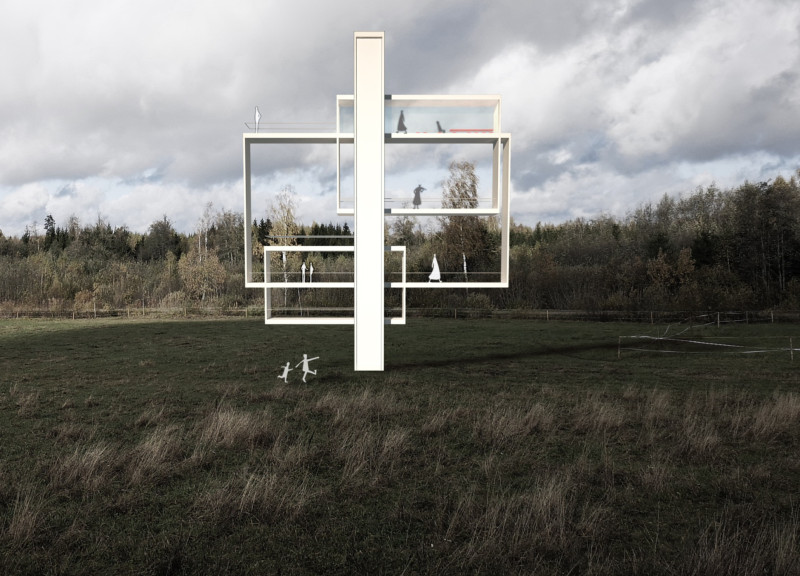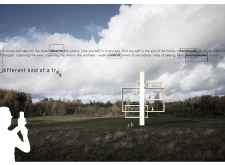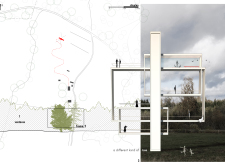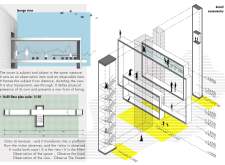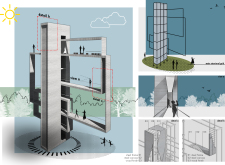5 key facts about this project
The architectural design project "A Different Kind of Tree" seeks to create a unique interaction between built space and nature. It stands as a modern structure that evokes the imagery of a tree while providing a multifunctional platform for observation and experience. Positioning itself within a scenic landscape characterized by fields and trees, this project enhances the viewer’s connection with the surrounding natural environment.
The design manifests as a rectangular tower articulated through multiple horizontal layers that extend outward, creating terraces and viewing platforms. These features allow visitors to engage with expansive views at various heights, emphasizing the relationship between observer and observed. The project employs transparency as a critical element, using large glazed surfaces that facilitate natural light and offer unobstructed sightlines to the environment.
Unique Design Approaches
The structure integrates a steel frame and carcass, which provide essential support while maintaining a lightweight appearance. A wood finish serves as an aesthetic counterpoint to the metallic elements, fostering a tactile connection to the natural setting. This combination of materials not only enhances the structural integrity but also reflects a commitment to sustainable practices.
Each viewing terrace has been strategically positioned to frame specific landscape features, allowing users to experience their surroundings differently. The design encourages exploration and personal interaction with nature, where each movement alters the viewer's perspective. This consideration of user experience helps differentiate this project from traditional observation towers, which often prioritize function over engagement.
Interaction and Experience
The project's spatial arrangement includes lounge areas that serve as social gathering points, complementing the various observing spots. These spaces are designed to foster community interaction while allowing for individual reflection. The layering and openness of the design invite visitors to step outside conventional modes of observation, promoting a dynamic relationship with both the structure and its surroundings.
This design represents a shift in architectural thinking, prioritizing not only utility but also the experiential aspect of space. By framing the surrounding landscape in innovative ways, "A Different Kind of Tree" challenges traditional architectural boundaries and celebrates the interplay of nature and design.
To gain deeper insights into this project, including architectural plans, architectural sections, and architectural ideas, readers are encouraged to explore the project presentation for comprehensive details.


